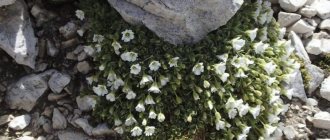What flower can compare in beauty and duration of flowering with a rose? What other perennial flowers have such a variety of colors, shapes, and scents as the garden rose? The undisputed favorite and queen of the garden, the rose, amazes the imagination of gardeners all over the world.
It is impossible to imagine a garden without these wonderful flowers. Bush, ground cover, climbing, park, polyanthus, floribunda, hybrid tea, miniature - this is a small list of the various species of this wonderful perennial plant. And the number of varieties cannot be counted.
Today we will talk about climbing rose. About agricultural techniques that guarantee you gorgeous growth and unparalleled flowering of the main beauty of the garden.
Choosing a place to plant a climbing rose
Climbing rose in the design of the site
The sun and again the sun, the rose loves sunny places. This is especially true for regions with cool climates. Only in the sun will this beauty grow actively and delight you with fragrant flowers. In areas with a hot climate, not all varieties can withstand full sun; they will grow well, but the flower can quickly lose its attractiveness and fly away. Rose does not like wet, swampy areas. Choose a place that is dry, without flooding.
A climbing rose needs space and support. Some varieties can grow 2-3 meters wide and reach 5-6 meters high. With this giant you can cover an ugly fence, hang it on an arch, pergola, or decorate a gazebo or terrace. You cannot plant it close to metal surfaces, a fence, a garage, the bush will overheat. The distance between the bush and the wall is at least 60-100 cm. Such a large bush should look harmonious on the site, without interfering with the passage. It’s not very pleasant to cling to the thorns of rose branches while walking through the garden. Take these features into account when preparing the seat.
Shelter for the winter
Preparing for winter and covering climbing roses is one of the important elements of flower care. How to do it:
- At the end of August, stop watering and fertilizing the bush.
- Before frost sets in, remove the branches from the support, wrap them with rope and try to tilt them.
- If you feel that the stems may break, fix them in this position. Let the bush stand like this for 2-3 days, and then continue until it lies completely on the ground. Secure with wire or pegs.
- Sprinkle the soil around the tree trunk with fallen leaves or cover with dry soil.
- With the onset of frost, cover the bush with lutrasil. If winters in the region are cold, cover the branches with spruce branches and then wrap them with agrofibre.
- In regions with a warm climate, climbing shrubs can be covered with spruce branches, wrapped in burlap, and then with twine, without removing them from the supporting structures.
Preparing the soil and planting hole
Planting hole for a rose
The climbing rose is a large plant with powerful roots. If you have excellent nutritious soil on your site, then you don’t have to make a large planting hole. But if the soil is poor and clayey, then you will have to try hard. A rose can grow in almost any soil, but the strength and intensity of flowering will depend on its nutritional value. We dig a hole measuring 60 by 60, 50 cm deep. Prepare the planting soil: garden soil, compost, sand, well-rotted manure, humus, mineral fertilizers, you can add ash. When planting in autumn, there is no need to add manure, as this can provoke the growth of shoots.
Important! Do not put fresh manure in the planting hole, it will harm the roots of the plant.
The soil should be light, nutritious, water-permeable and breathable.
All that remains is to choose a variety and correctly plant the future decoration of your garden.
Pests
Among insect pests, the most dangerous are beetles, caterpillars, and larvae. They damage the tissue of one of the organs, stop growth and shorten flowering time.
Aphid
They live in colonies on the inside of leaves, on shoots, on peduncles and flowers. You can get rid of aphids by spraying the plant with insecticides.
Rose leafhopper
A dangerous insect that causes great harm to the rose. The leafhopper can be identified by the appearance of its leaves. They are sprinkled with small white dots. If the plant is not treated, it dries out and drops its leaves.
Leaf rollers
Caterpillars appear in the spring, eating everything in their path: barely opened buds, young leaves and shoots.
Variety selection and seedling preparation
Climbing rose - rambler
The number of varieties of climbing roses is amazing. They differ not only in color, shape, size, aroma of the flower, but also in the size of the bush, abundance of flowering, winter hardiness, and resistance to weather conditions. All these factors must be taken into account when purchasing a seedling. If one variety performs well in the southern dry region, then in the northern humid climate it may not be able to survive the winter at all or will show poor growth and flowering. When choosing a variety, we advise you to read its characteristics in the rose encyclopedia Rosebook.ru. There are many reviews from gardeners that will help you make your choice.
Climbing roses are divided into groups:
- Ramblers have long, very flexible branches. The flowers are small, collected in inflorescences. Each inflorescence contains from 3-7 flowers. They can grow up to 10 meters in height. Planted to decorate fences, gazebos, pergolas, arches, walls. They bloom very profusely, it’s just a wall of flowers. Of the minuses: they bloom once, within a month. They usually bloom in May - June. In order for the rambler to bloom, it is necessary to preserve last year's shoots, so you will have to remove the entire plant from its support and cover it. Now you can find new varieties of ramblers that bloom again.
- Climbers have tough, thick shoots; putting this species to wintering requires some tinkering. This species is re-blooming, blooming on the shoots of the current and last year. The height of the shoots is up to 3-4 meters. The flowers are large and can be collected in inflorescences of 3-5 pieces or bloom as single flowers. Of the minuses: flowering is not so abundant, the rose is difficult to cover.
- Scrubs are not exactly climbing roses, but are worth considering in vertical gardening or planting as a tapeworm. They have thick, strong branches; no support is required. Height from 1.5-3 meters. Large, double flowers, bloom almost continuously. There are many worthy varieties among this species.
Climbing rose - climber
How actively the bush will bloom and grow depends on the quality of the rose seedlings. Buy seedlings in garden stores or nurseries:
- Firstly , there is less chance of mis-grading and the risk of acquiring a diseased plant.
- Secondly , a large selection of seedlings and varieties.
In the spring, they sell seedlings with roots wrapped in film and branches covered in wax. Peel off the wax and check the condition of the branch. The branch should be green, elastic, without wrinkling or black spots. any damage. It happens that the seedlings have already actively started to grow, have grown long light green shoots, it is better not to take such specimens, they will take a long time and it will be difficult to take root. Take seedlings with at least 2-3 branches.
If you purchase seedlings with bare roots, then carefully examine the roots; they should be elastic and flexible. Ask the seller to cut off the tip; the root inside should be white.
Rose seedlings
A good, healthy seedling can be immediately planted in the ground, but before planting, you can soak the seedling for several hours in water with roots to stimulate root formation. Proper planting of a climbing rose in open ground in spring guarantees excellent growth of the bush
Use in landscape design
In order for climbing roses to provide not only aesthetic benefits, but also practical ones, they can be planted as a hedge. It can be of different heights, widths, and a lattice fence or a special device for climbing plants can be used as a frame. Also, some gardeners plant this representative of the flora in such a way that it entwines gazebos, pergolas and other impressive structures. It looks quite stylish and unconventional. There is also a method for creating baskets of roses. They perfectly decorate the walls of houses, trellises and trees. There is an easier way to plant this specimen. Plant it as a plant on its own, but in this case it is better when it has large flowers. It can be placed at the beginning of the yard, next to the windows and recreation area. By planting roses at the foot of massive trees, you can achieve a stunning landscape design. But the last option, which we will describe a little, is the ordinary planting method. By planting flowers in a row, you can unusually decorate the paths and perimeter of the territory.
[Gallery_v1]
Planting climbing roses in open ground in spring
Planting roses in open ground
Spring and autumn are excellent times for planting a seedling in the ground. Autumn planting is preferable in the south, since there may be a sudden heat in the spring and it will not have time to take root.
We’ll talk about the features of planting in spring. Planting times vary by region.
Remember! The climbing rose is not at all afraid of frost and can easily withstand temperatures down to -10 degrees without shelter.
| Region | Landing dates |
| Southern | first half of April |
| Middle lane | from mid-April |
| Ural, Northern regions | end of April to end of May |
If you purchased a rose with ZKS (in a pot), then it can be planted in the ground from the pot even at the beginning of summer.
On a note! Plant seedlings and saplings can be of two types: With an open root system ( OKS ) and a closed root system ( ZKS ). As a rule, seedlings with ZKS are seedlings in a pot, or dug up with a clod of earth.
Seedlings can be planted in dry or moist soil, deepening the graft or leaving it on the surface. It is your choice to deepen the grafting or not; it does not affect the growth of the seedling in any way. In the Northern regions, we recommend deepening it to protect it from freezing.
Before planting, trim the root by 1-2 cm to stimulate growth.
What nuances need to be taken into account when dry planting.
- planting depth, seedling grafting should be no more than 10 cm underground.
- the roots should be well spread.
- carefully compact the soil so that there are no voids left between the roots and the soil.
- pour until the ground is completely soaked.
- If necessary, add more soil and spill.
The wet planting method is as follows: pour soil into a hole and fill it with water to make a liquid mash, lower the seedling into it onto the desired coarse soil and add soil. The advantages of this planting are that the roots are tightly covered with the soil and the planting depth is easy to adjust.
We have planted the roses correctly, now we need to follow the agricultural techniques for growing roses in open ground.
Roses in a pot with a closed root system
Caring for a climbing rose after planting in the ground
Roses planted in spring need shading for some time; you can stretch a thin covering material over them. This will give the tender new shoots protection from the sun's rays.
For beginners, growing roses seems like a difficult task; in fact, the rose is not a capricious plant.
To get good growth and intense flowering, you need to provide proper care.
Watering
A climbing rose in adulthood can go without water for a long time. The roots of the bush are large and powerful, going to a depth of 2 or even more meters. Water thoroughly once a week. Young seedlings need to be watered more often. Roses love being sprayed with water. In the evening after sunset, you can refresh the bushes with a light shower. And for the roots to breathe, loosening is necessary.
Loosening
All plants need loosening; this allows the soil to be breathable. Loosening is carried out the next day after watering; it is convenient to do this with a hoe. This way, you will also remove weeds that should not be allowed to reproduce. Do not loosen too deeply, as you may damage the roots of the plant.
To prevent the plant's roots from overheating, mulch the soil.
Mulching
Mulching roses with decorative wood chips
Mulching greatly helps gardeners in caring for the plant.
Advantages of mulching:
- lowers soil temperature, keeping roots from overheating;
- retains moisture in the soil;
- limits weed growth;
- nourishes the soil, making it light.
You can use decorative mulching: bark, wood chips, crushed stone, decorative pebbles, marble chips.
Nutritious mulching: high-moor peat, mowed lawn grass, straw, compost, well-rotted sawdust, humus.
Mulch with a layer of 5-10 cm, sprinkling the soil within a radius of at least 20 cm from the plant trunk.
Even if there is nutritious mulch, roses need to be fertilized with it.
Fertilizer
Fertilizer for roses
Roses love to “eat.” In the spring, after the buds appear, the rose needs to be fertilized with nitrogen fertilizer so that it begins to actively grow and develop shoots and leaves.
During the budding period, the plant needs phosphorus and potassium fertilizers for lush flowering and strong shoots. You can dilute fertilizers in water and water them, or you can make grooves around the rose, within a radius of 20 cm from the trunk, adding dry fertilizers there, they will gradually nourish the plant.
There are excellent complex fertilizers specifically for roses, feed them. Their composition is balanced, they have all the necessary microelements for the growth and flowering of the bush.
She loves feeding with organic fertilizers, ideally horse manure. If the manure is well rotted, then it is perfect for mulching. Fresh manure is infused in water and the plant is watered with this solution. Do not overdo it with manure, a couple of times per season is enough.
Important! In autumn, all nitrogen fertilizing is contraindicated; the growth of young shoots is no longer necessary.
In the fall, they focus on potassium fertilizing. Potassium strengthens the shoots, and this increases their winter hardiness. At the beginning of autumn, you can water with fertilizer; in a cooler period, you can fertilize the leaves.
For proper care, the rose will thank you with emerald glossy foliage and enchanting flowering.
But feeding will not help if the plant is sick or infested with pests.
Pest and disease control
Diseases and pests not only spoil the beauty of the plant, but can significantly affect the health of the bush.
Let's consider the main diseases and pests of the plant, methods of combating them.
| Diseases | Symptoms | Causes | Treatment |
| Powdery mildew | A white coating appears on the leaves and buds | High air humidity, lack of light | Topaz, Fundazol, Skor, Thiovit Jet. |
| Rust | Red spots on the back of the leaf, buds | Introduced fungal spores develop in warm and humid spring | Prevention in spring with Iron sulfate. Pruning of branches, treatment with Hom, Abiga-Pik, Oksikhom. |
| Black spot | Black spots on leaves and bark | Crowded plantings, poor ventilation, humidity | Pruning and destruction of affected leaves, treatment with copper-containing preparations |
| Branch burn | Dark spots on the bark of branches | Excessive humidity in winter shelter | Trimming branches to healthy tissue |
Rose black spot
Interesting! Varieties with glossy leaves are more resistant to diseases.
When choosing varieties, pay attention to their resistance to disease. There are varieties that are quite resistant to diseases, and there are those that get sick at the slightest violation of agricultural practices.
| Pests | What do they look like? | What harm do they cause? | Fighting methods |
| Aphid . Usually reproduces actively in summer | small insects, black or green | settle on young shoots and buds, feeding on plant sap | Spark, Fufanon. Alatar, Biotlin, etc. |
| Spider mite appears in summer when it is dry and hot | very small, can be identified by the presence of cobwebs and small spots on the leaves | feed on juice, gradually the leaf turns yellow and falls off | Iskra, Fufanon |
| Caterpillar | green | chews out leaves and buds | The spark from the caterpillar helps a lot |
| Bronzovka | shiny greenish beetle | they gnaw flowers. They can easily destroy all the beauty of flowers | The drugs don’t help much, manual collection in a bottle with chemicals or water. |
| Weevils | black beetle up to 1 cm | nibble leaves. More dangerous are the larvae that gnaw the roots. | Hand collected at night, treated late in the evening with an insecticide against them. |
Bronzovka.
Pest on roses Treatment should be carried out early in the morning or in the evening after sunset, in dry, calm weather.
Remember ! You cannot spray plants during the day, as leaves and flowers may get burned.
Another secret to the success of a beautiful, healthy plant is pruning.
Trimming
A formed bush of a climbing rose.
A rose bush after proper pruning will become even more beautiful and lush. This is one of the conditions for the health of the plant and the splendor of flowering. Lack of pruning will lead to thickening of the bush, poor ventilation, and as a result, to various diseases.
| Trimming type | Time spending | Why do they do it? |
| Sanitary | In spring, before the buds swell | Cut out all damaged, diseased, poorly overwintered shoots. |
| Decorative | In summer after flowering | Cut off all dried flowers. This preserves the decorative appearance of the bush and provokes the growth of new shoots. |
| Formative | In autumn, before shelter | All diseased, dried branches are removed. Ramblers are left with 5 skeletal branches, the rest are cut out. Climbers are left with 5-7 branches, the rest are cut out. |
Pruning is done with sharp pruning shears treated with alcohol or potassium permanganate.
This pruning allows you to form a beautiful bush and flowering will be intense.
It happens that the gardener made a mistake with the planting location and the rose needs to be replanted. How to do this correctly?
Transfer
Transplanting a rose
A climbing rose is transplanted to another place in late autumn (it is already sleeping) or early spring (when it has not yet woken up), but the bush is prepared in the fall.
The older and larger the bush, the larger its root system and the more difficult it is to replant.
Prepare a piece of film or fabric for carrying the bush. Trim the branches of the plant, leaving them 60 cm long. Dig up the root of the plant at a radius of 20-25 cm from the trunk. Try to keep as many roots as possible, don't cut them too short. Do not destroy the earthen ball so that the roots are not exposed. Slowly, using a shovel or pitchfork as a lever, gradually lift the bush and place it on the prepared cloth or film.
Carefully place it in a new place. Spill with water. Now your beauty will grow in a new place.
The rose requires the most attention in its first year in the garden.
The unsurpassed charm of the queen of flowers
Translated into Russian, the name of the New Dawn rose variety is translated as “new dawn.” It is a lush ornamental shrub up to 2.5 m wide and 3 to 6 m high. It is formed by thorny branches, which are covered with glossy foliage of a rich green color.
Every year, single or clustered buds appear among the “dense thickets.” The flowers are bowl-shaped, each with up to 40 pink petals. The diameter of the buds is from 10 to 12 cm. After full bloom, they exude a pleasant aroma, reminiscent of a mixture of apple and citrus.
The flowering process lasts almost the entire season. In May, buds form on old shoots. And at the end of August, on young branches. The inflorescences gracefully replace each other, so it seems that the crop is always strewn with buds. In some regions, she even welcomes winter with a lush bouquet of roses.
The popularity of the New Dawn variety is due to a number of advantages:
- long flowering period;
- slow blooming of buds;
- play of white and pink tones;
- unique winter hardiness;
- easy care.
In addition, the culture takes root wonderfully in poor soils. Blooms continuously in both sunny and shaded areas. Reacts well to various feedings. Successfully resists diseases and insect pests.
The only drawback of the New Dawn rose is the many small thorns that graceful shoots are equipped with.
Features of caring for a climbing rose in the first year of growth
Usually, roses planted correctly in the ground do not cause much trouble. They are actively starting to grow, they only need to be watered with warm water in time. But sometimes, a young seedling freezes and does not grow. Or it produces new leaves and they immediately dry out. This seedling needs help.
- be sure to shade the seedling;
- water daily with warm water;
- mulch the tree trunk circle;
- Spray or water with a solution once a week, adding epin, zircon, HB-101 and other stimulants.
Important! If the seedling is weak and has not grown enough, but is about to bloom, then it is better to cut off the buds so as not to weaken the rosette.
Caring for a climbing rose
Rose cuttings or layering will require much more attention.
Climbing rose propagation
Did you like some variety in the garden of your acquaintances, neighbors or friends and want to have the same one? How to propagate a rose bush to get many new beautiful plants?
There are several ways to propagate the queen of the garden:
- seeds;
- cuttings;
- layering;
- vaccination.
Let's look at each of them in more detail.
Growing from seeds
Some novice gardeners try to grow roses from seeds. I think this method is useless and not productive:
- You won’t get good varieties of roses from seeds;
- this process is long, difficult and ineffective;
- there are many much easier ways to reproduce.
Cuttings
Cuttings of roses
Cuttings are one of the favorite methods of propagation among rose growers. This method has the following advantages :
- allows you to get many new plants from one bush.
- you can take planting material from any plant, even cutting a twig from a friend in the garden.
But it also has disadvantages :
- the process is quite labor intensive,
- there is a large loss of cuttings.
Cuttings are taken from the bush in mid-summer, when the plant is actively growing. The shoot should not be woody, but not too young. The thickness of the shoot is about the size of a finger. We cut cuttings with 2-3 internodes. Cut the cutting under the bud. Cutting angle 45 degrees. Now the cuttings need to be stuck into a container with a damp substrate and covered with a jar. The sand should always be slightly damp. Place the cuttings to root in a bright place, without sunlight. This rooting method is ideal for climbers.
Ramblers are easier to root by layering.
By layering
Propagation of roses by layering
Varieties with flexible shoots are propagated by layering. To do this, in the spring we make cuts on one of the branches under the buds. We make a shallow groove in the ground, pour in light soil and lay the shoot in a wave-like manner, fixing it in the places of the cuts with metal staples. We fill the top with soil, leaving the tip of the shoot outside. Don't forget to water our cuttings. Next spring we separate the shoots from the main bush. And we transplant new bushes to a permanent place.
Interesting! Reproduction by cuttings and layering allows you to obtain your own rooted seedlings.
Even more new seedlings from the mother bush can be vaccinated against rose hips.
Grafting (budding) on rose hips
Experienced rose growers propagate roses by grafting onto rose hips. To do this, first, rosehip bushes (rootstock) are grown from seeds. On the root neck of the rootstock, the bark is cut with the letter T, where the eye of the rose bud is placed. We press the eye tightly to the root collar and wrap it with a special film for budding. The budding area is covered with soil to a height of at least 5 cm. When the rose sprouts, all branches of the rootstock are cut off and the rose remains on the rosehip roots.
Thus, it is possible to obtain from one rose bush a large number of new seedlings that retain all varietal qualities.
Sometimes it happens that there is a beautiful, healthy bush, but there are no flowers. Let's look at the reasons.
Why doesn't the climbing rose bloom?
Climbing rose in the garden
The most common reason why a rose does not bloom is an excess of nitrogen fertilizers. The bush grows green mass, but does not set flowers. People say “fatten”.
Poor planting location, too much pruning, poor soil, unsuccessful wintering, diseases - all this can affect the flowering of a climbing rose. Therefore, it is important to properly care for it.
Read the article carefully, follow the rules of agricultural technology and enjoy the gorgeous flowering of the queen of the garden.
How to properly plant and care for a climbing rose. Pruning a climbing rose after flowering.
Tags
pests open ground climbing roses care











